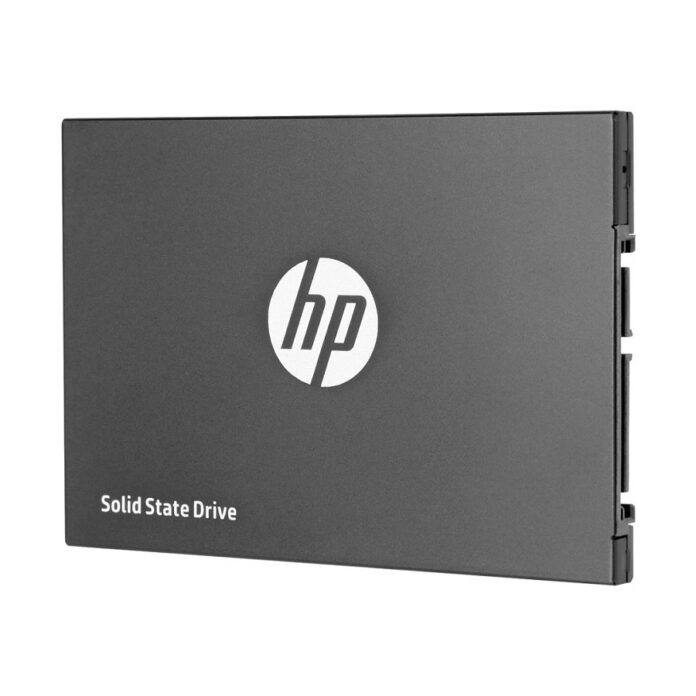In the event that you effectively follow the PC space for refreshes connected with the most recent equipment, you will be comfortable with the SSD (Solid State Drive) and you will agree that in recent times it has become one of the crucial factors when building a custom PC. or decide on a laptop. In fact, in machines with even high-end specs, a slow storage device, which in most cases is a hard drive (hard drive), can create a bottleneck and affect overall performance.
In any case, in the event that you’re on the other portion of the range and new to SSDs, here’s a complete SSD purchasing manual to assist you with settling on an educated choice.
For those new to SSDs, You can buy HPE SSD or, here’s a fast groundwork: An SSD or Solid State Drive is a storage device, available as an internal and external drive. It provides quick access to built-in programs with faster loading speeds and provides a better overall experience when running multiple programs at the same time. Additionally, if you install the operating system on an SSD, you can expect much faster boot times and, in turn, get the most out of the powerful hardware installed on your machine. Heck, you can even plug an SSD into an old computer to bring it to life and make it run better.
Compared to a storage drive or regular hard drive, which includes mechanical components that tend to age over time and are prone to deviation, an SSD, on the other hand, has no mechanical (moving) parts. Rather, it is a flash memory device that typically includes NAND flash memory just like USB drives or memory cards. Therefore, by not having a physical platter and other associated hardware components (actuator, spindle motor, etc.), an SSD also reduces power consumption and also provides a relatively better lifespan. Although, because the technology used here is newer and more advanced than the old traditional hard drive, SSDs tend to be much more expensive than their hard drive counterparts.
In addition, depending on the use scenario, different types of SSD are available in the market. So, to simplify this equation here is a breakdown of the things you need to keep in mind when buying an SSD.
Different SSD Form Factors
The form factor describes the physical attributes of a device/hardware component, such as weight, size, and other similar attributes. With regards to SSDs, the hidden innovation has seen huge progressions throughout the long term, as far as both execution and structure factors. Therefore, an SSD today can be categorized into four form factors.
1. 2.5-inch
The 2.5-inch structure factor is suggestive of conventional hard drives found on most machines. Casually alluded to as a little structure factor (SFF), the name, 2.5 inches, demonstrates the size of the unit. It is a normally utilized SSD structure factor, particularly on machines that have a drive inlet and associates through the Serial Advanced Technology Attachment (SATA) interface. Since numerous custom forms as of now utilize the 2.5-inch hard drive, the accessibility of a comparable SSD identical makes it simple to progress to a quicker driver, without requiring extra equipment. Thus, the 2.5-inch structure factor is one of the favored guidelines and decisions for SSDs.
2. M.2
M.2, formerly NGFF (New Generation Form Factor), replaces the mSATA standard. This is a relatively new specification for internally mounted SSDs. The module looks like a RAM stick and finds its applications on most laptops these days. Not to mention that it is also increasingly adopted by various motherboard manufacturers. M.2 SSDs come in various sizes and have NAND chips present on one or both sides. For example, in the case of soldered modules, the chips are only on one side, unlike interchangeable modules, which may have chips present on both sides. In addition, it is up to the manufacturer to decide which interface to provide on their units, which again depends on a number of factors. In general, you can find an M.2 SSD with a SATA or PCIe interface, those with a PCIe interface having a higher price tag.
3. U.2
At first glance, U.2 SSDs seem somewhat identical to the SATA hard drives of yesteryear. They have a size of 2.5 inches, which is relatively larger than M.2 SSDs, and thus offer more capacity and better heat dissipation than M. As for the connection type, U.2 uses the PCIe interface to establish the connection with the motherboard. However, it requires a separate connector, similar to the SATA Express socket, if you want to connect it to an M.2 port. One of the advantages that U.2 over M.2 is that it supports hot swapping, which means you can replace or add the SSD while the machine is running, without having to shut down / restart it.
4. Add-in card (AIC)
An add-on card (AIC), as the name suggests, is a form factor that offers the ability to connect an SSD to a machine as an expansion. Hence, providing greater compatibility and flexibility. It relies on the PCIe expansion slot for connection, which also offers an advantage because for those who have an older machine with a relatively old motherboard, it is likely that it does not have an interface. modern (like M.2). So in such cases, the add-on card form factor (AIC) is a boon and makes it easier to upgrade a machine with a faster storage component. However, if you happen to have a graphics card installed in your machine, it may not be possible to add an AIC SSD as both use the same slot. Moreover, to this day, these SSDs are not the preferred choice of an average user and are mostly preferred by die-hard enthusiasts, especially for cosmetic purposes.
Types of SSD Interfaces
In the same way that SSDs have various form factors, the technology has also seen advancements and improvements in the way it communicates with the motherboard – the interface. From SATA patch drives that date back to the old days of hard drives to PCIe drives with NVMe support, there are different types of interfaces used by SSDs. Here’s a breakdown to make it easier for you.
1. SATA
The most common interface used by most consumer SSDs is SATA or Serial ATA (Advanced Technology Attachment), especially SATA 3. It has been around for a long time and has been the preferred choice for transferring data between motherboards and computers. storage devices, such as hard drives. One of the additional advantages of the SATA interface is that it can automatically check the transmit instructions and correct an error if it finds one. Therefore, be more reliable in transmitting data.
Speaking of transmission speeds, SATA 3.0, which is the preferred SATA interface choice for SSDs, offers a maximum transfer speed of 6 Gbps, which is double that of SATA 2. Although due to some limitations of hardware, actual speeds generally tend to be lower. , unless, of course, the player and interface are both compatible and support high-speed transfers. In addition, it is also worth mentioning that there is also the host controller interface, AHCI (Advanced Host Controller Interface) in the case of SATA, which was ideally designed for mechanical drives and therefore could cause some kind of bottleneck. of strangulation. uninitiated, in addition to the interface, which is used to connect a driver, there is also a need for a protocol that can help establish the connection between the motherboard and the unit]. Also, from what it looks like, SATA 3.0 (and AHCI) seems to have peaked in terms of transfer speed and overall performance, which is why most high-end users are turning to other interface options.
2. M.2
M.2 is one of the most common SSD interfaces. It is generally embraced by producers and can be found on PCs, workstations, and scratchpads. The interface was developed by Intel to replace mSATA (mini SATA), which is now obsolete. Compared to mSATA, M.2 offers faster speeds and more volume, which has increasingly become one of the deciding factors when it comes to SSDs. Additionally, another factor that makes M.2 better than its predecessor is efficiency, with higher speeds in a relatively small footprint.
The small footprint makes the M.2 interface a preferred interface on laptops and notebooks. Likewise, it also allows multiple interfaces on a motherboard, which can help those who need to have multiple SSDs working in RAID configuration.
3. PCIe
PCIe (Peripheral Component Interconnect Express) is a standard type of connection for various internal devices and has started to see increasing adoption in recent times. It is also one of the preferred SSD interface choices over SATA (SATA 3.0, in particular) mainly due to the higher transfer rates – 1 Gbit / s over 600 Mbit / s. As a result, many motherboard manufacturers are starting to adopt and push the PCIe interface. Similar to SATA, PCIe has also seen an evolution, with PCIe 3.0 being the latest iteration of the interface used. As we stack the two together, PCIe has more noticeable benefits including a hot-swapping, better performance with more storage-intensive work, and advanced error detection and reporting.
Moving on to protocol, PCIe introduces one of the terms commonly used in relation to SSDs these days, NVMe (Non-Volatile Memory Express), which helps improve performance. It does this by incorporating parallelism to reduce latency and, in turn, improve performance. However, that is not to say that the interface has no drawbacks, compared to some of the other offerings, SSDs with a PCIe interface (with NVMe) tend to be more expensive.










